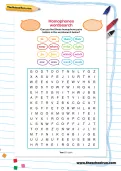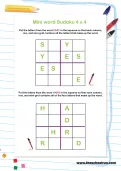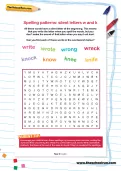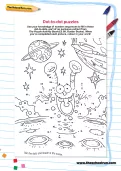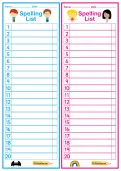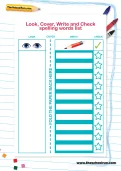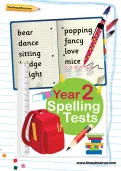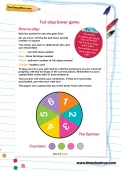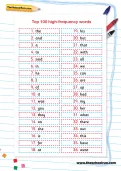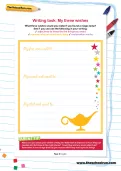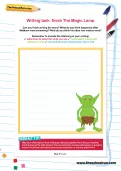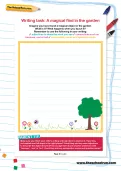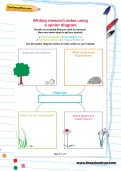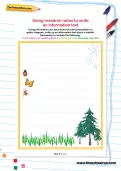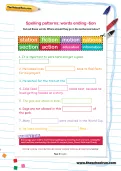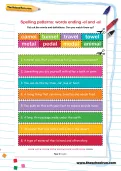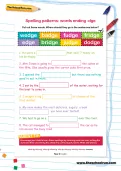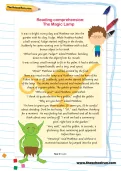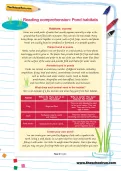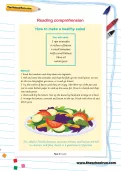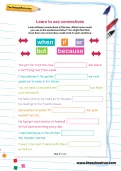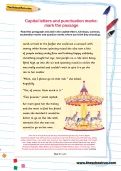Year 2 English worksheets
Free worksheets: Word puzzles, KS1, Y2
You’ll need to login or Register first to access these worksheets for free.
Once you’ve tried out our free worksheets, why not explore all our resources (1000s of worksheets, interactive tutorials, learning packs and more) with a 14-day FREE trial subscription.
Homophones wordsearch
Can you find these homophone pairs hidden in the wordsearch below?
Mini word Sudoku 4 x 4
Put the letters from the word EASY in the squares so that each column, row, and mini-grid contains all the letters that make up the word.
Spelling patterns: silent letters w and k
A Year 2 English wordsearch created by a teacher, which focuses on the silent letters w and k. Examples and answers are included.
Dot to dot puzzles
Help your child improve their pencil control and number sequencing with a few dot to dot puzzles. An exclusive extract from The Puzzle Activity Book (£5.99, Buster Books).
Spelling words list
Get weekly spelling practice organised with our printable spelling lists, blank and ready to be filled with your child's assigned words. Attach the list to the fridge for quick revision sessions before the weekly spelling test.
Look, Cover, Write and Check spelling words
A blank Look, Cover, Write and Check spelling words list for kids to download and print to practise their weekly spelling words and prepare for tests.
Year 2 spelling tests pack
Help your child brush up their spelling skills at the end of KS1 with our pack of practice 'tests', designed to help them revise common Y2 spelling patterns and high frequency and exception words.
First 100 high-frequency words list
Children learn to read and spell high-frequency words, the most common words in English-language texts, throughout primary school. Download a list of the first 100 high-frequency words to use for at-home spelling practice and revision.
Writing task: My three wishes
What three wishes would you make if you found a magic lamp? Write them down here.
Writing task: finish The Magic Lamp
Can you finish writing the story about the magic lamp? What do you think happened after Matthew went swimming? What do you think his other two wishes were? You'll need to do this worksheet first: http://www.theschoolrun.com/reading-comprehension-the-magic-lamp
Writing task: A magical find in the garden
Imagine you have found a magical object in the garden. What is it? What happens when you touch it? Now write about what you've found – but don't forget to use adjectives, connectives, exclamation marks and question marks!
Writing research notes using a spider diagram
Decide on a habitat that you want to research. Then use this spider diagram to make notes on your habitat.
Using research notes to write an information text
Using information you have found out and presented in a spider diagram, write up an information text about a habitat.
Spelling patterns: words ending -tion
Cut out these words. Where should they go in the sentences below?
Spelling patterns: words ending -el and -al
Cut out the words and definitions. Can you match them up?
Spelling patterns: words ending -dge
Cut out these words. Where should they go in the sentences below?
Spelling patterns: silent letters w and k
A Year 2 English wordsearch created by a teacher, which focuses on the silent letters w and k. Examples and answers are included.
Reading comprehension: The Magic Lamp
This Year 2, KS1 reading comprehension PDF was created by an experienced teacher to help your primary school child develop their English skills.
Read this story about a magic land and then see if you can answer the questions afterwards.
Read this story about a magic land and then see if you can answer the questions afterwards.
Reading comprehension: Pond habitats
Read this text about pond habitats and then see if you can answer the questions below.
Reading comprehension: How to make a healthy salad
Have a go at this reading comprehension – and learn how to make a delicious salad too!
Learn to use connectives
Look at these connectives in this box. Which ones could you use in the sentences below? You might find that more than one connective could work in each sentence.
Capital letters and punctuation marks: mark the passage
A Year 2 printable worksheet created by a primary school teacher to help your child with capital letters and punctuation marks.
Read this paragraph and add in the capital letters, full stops, commas, exclamation marks and question marks where you think they should go
Read this paragraph and add in the capital letters, full stops, commas, exclamation marks and question marks where you think they should go
